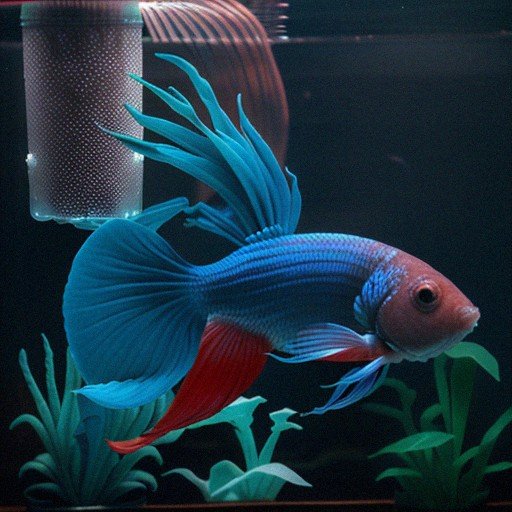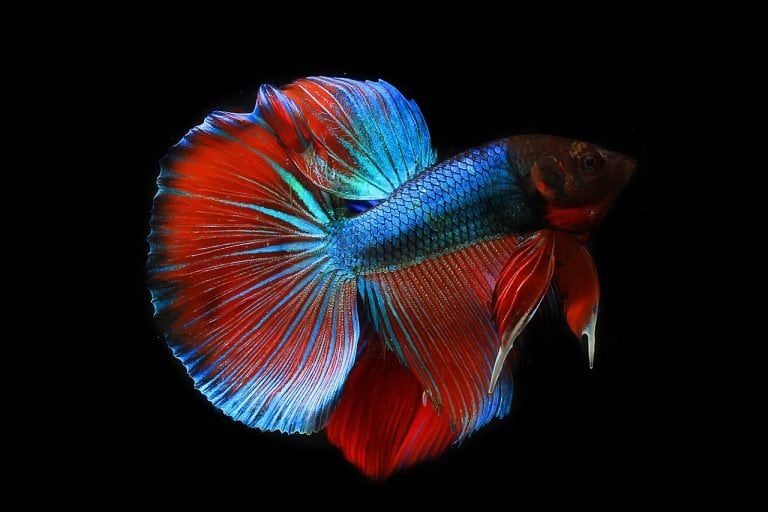As aquarists, it is our privilege to observe the rich tapestry of behaviors exhibited by Betta fish, particularly during feeding time. Recognizing the signs of anticipation and excitement in your Betta fish can greatly enhance the experience of providing for their dietary needs while respecting their inherent desire for freedom.
This text will delve into the nuanced patterns of behavior that surface as feeding time approaches. We will explore the dance of anticipation, changes in coloration, surface behaviors, and the significance of aggressive displays.
Understanding these signals not only ensures a more harmonious feeding process but also fosters a deeper connection between the Betta and its caretaker. Join us in unraveling the subtle cues that indicate your Betta’s readiness to feed and its zest for the nourishment you provide.
Key Takeaways
- Hunger signals in betta fish include increased activity near the water’s surface, rapid gill movement, vigorous swimming patterns, and overt expression of hunger.
- Coloration in betta fish intensifies during feeding time, with vibrant streaks or spots emerging and contrast enhancement between body and fin colors.
- Surface behaviors observed in betta fish during feeding time include rising to the water’s surface, rapid darting movements, hovering near expected food sources, and surface gulping for atmospheric oxygen intake.
- Aggressive displays in betta fish during feeding time include flaring gills, spreading fins to appear larger and intimidating, vibrant coloration as a warning signal, and head-on confrontation with intruders or other betta fish.
Identifying Hunger Signals
At feeding time, a Betta fish may exhibit distinct behavioral cues indicating hunger. These cues include increased activity near the water’s surface and rapid gill movement. These appetite cues serve as vital indicators for owners to discern the optimal moments for dietary provision.
A feeding frenzy, characterized by vigorous swimming patterns and a pronounced eagerness to consume food, can be readily observed as an overt expression of hunger. Such manifestations of desire for sustenance are not merely anecdotal observations but rather, they are substantiated by ethological studies.
These signs must be interpreted with precision, ensuring that the Betta’s liberty to express natural foraging behavior is respected, while simultaneously preventing overfeeding—a common pitfall that can lead to health complications in these ornamental creatures.
The Dance of Anticipation
Observing the Betta’s anticipatory dance provides insightful clues into its readiness for feeding. This ritualistic display, often termed the “Betta ballet,” is a series of Mealtime twirls and vibrant gesticulations that signal the imminent request for nourishment. The Betta ballet is not merely an expression of excitement but a sophisticated behavioral adaptation that has intrigued ichthyologists.
| Behavior | Description | Significance |
|---|---|---|
| Gliding | Smooth swimming near the water’s surface | Indicative of alertness |
| Flaring | Spreading fins and gill covers | A display of anticipation to stimuli |
| Vertical Dancing | Upward swimming motions | Signals heightened feeding readiness |
| Rapid Dashing | Swift movements in the tank | A sign of eagerness and vitality |
These manifestations are a testament to the Betta’s complex cognitive abilities and provide caretakers with a framework to interpret and cater to their pet’s desires.
Colors and Feeding Excitement
During feeding times, a Betta fish may exhibit pronounced coloration changes, a remarkable physiological response that underscores their heightened state of excitement. These color changes can be both subtle and striking, signaling an intrinsic reaction to the prospect of nourishment. The Betta’s display is not merely aesthetic; it is an expression of biological readiness and eagerness.
To elucidate these dynamic changes, consider the following:
- Intensification of existing hues, indicative of arousal and alertness.
- Emergence of vibrant streaks or spots, possibly serving as a communicative signal.
- Contrast enhancement between body and fin colors, accentuating the fish’s profile.
- Rapid shifts in coloration, correlating with immediate environmental stimuli.
- Fin flaring, often accompanying color changes, as a multifaceted display of anticipation and dominance.
These points collectively demonstrate the Betta’s complex relationship with feeding—a synthesis of instinct, physiology, and behavior.
Surface Behaviors Explained
Many Betta fish exhibit a distinctive behavior of rising to the water’s surface when anticipating feeding, which may include rapid darting movements or a persistent hovering near expected food sources.
This surface activity, often misinterpreted as mere excitement, serves a critical role in their survival repertoire. Surface gulping, a common manifestation, allows Bettas to intake atmospheric oxygen directly, a vital adaptation for living in oxygen-poor environments.
Additionally, the construction of bubble nests is intrinsically linked to surface behavior. These nests, meticulously crafted by the male Betta, are indicative of reproductive readiness and serve as a protective incubation site for future progeny.
Analysis of surface behaviors in Betta fish provides an insightful window into their physiological needs and reproductive strategies.
Interpreting Aggressive Displays
A Betta fish’s aggressive display, characterized by flared gills, spread fins, and intense coloration, is a crucial behavior to recognize as it can be mistakenly attributed to excitement during feeding times. This misinterpretation can lead to overlooking signs of stress or territorial disputes that require intervention for the well-being of the fish. In the context of captivity, where freedom is constrained, understanding these displays is vital for maintaining a harmonious environment.
- Flaring Gills: A sign of aggression, often a reaction to a perceived threat or rival.
- Spread Fins: Intended to make the Betta appear larger and more intimidating.
- Vibrant Coloration: Can intensify during aggressive encounters as a warning signal.
- Head-on Confrontation: A direct challenge to intruders or other Betta fish.
- Bubble Nests: Though primarily for breeding, excessive nest building can indicate heightened territorial behavior.





